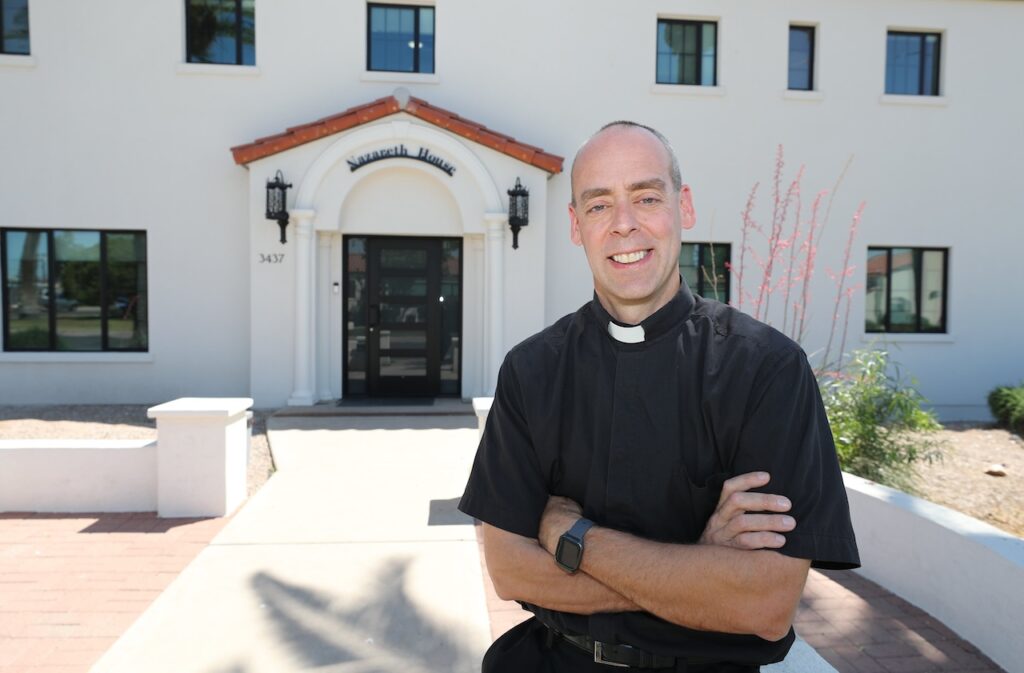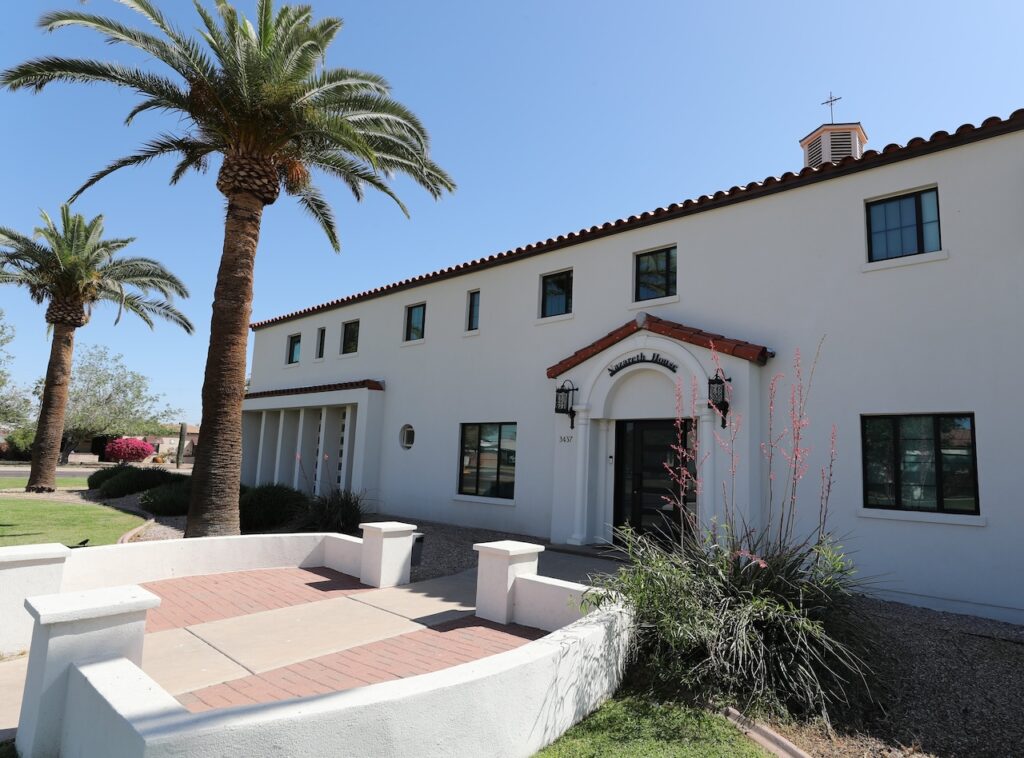(OSV News) — In an era of vocations undeniably impacted by a statistically declining priesthood, it’s perhaps among the rarest of Catholic news headlines: Seminary opens.
And yet, in the Diocese of Phoenix – established in 1969, populated with 2 million Catholics, and covering 43,967 square miles – that’s indeed the story, as the diocese and the University of Mary’s Mary College at Arizona State University (ASU) have partnered to establish a full seminary: Nazareth Seminary.
Since 2012, the University of Mary – a private, Benedictine college near Bismarck, North Dakota – has offered Catholic studies courses at ASU. But with Nazareth Seminary, the Diocese of Phoenix has now entrusted the University of Mary with the academic formation of its seminarians. Previously, the diocese’s seminarians had to travel out of state, with many in recent years relocating to Denver to study at St. John Vianney Seminary.
“We’ve never had a seminary in the Diocese of Phoenix before,” said vocations director Father Kurt Perera. “I think it’s a real game-changer in the sense of how we operate, how men are discerning, and how we integrate this new form of seminary formation locally, and apply it to what they’re experiencing and studying here.”
All undergraduate seminarians will earn degrees in Catholic studies and philosophy from the University of Mary, while graduate-level coursework – a master of divinity and master of arts in theology – will launch next year.
At present, 27 seminarians – the highest number since the diocese was formed – are currently enrolled at Mary College at ASU, including 10 poised to receive undergraduate degrees in spring 2026.
Given that several U.S. dioceses can number their seminarians in single digits, Phoenix’s progress is obviously significant.
In the U.S., some 8,000 seminarians studied during 1970; today, 2,980 men are preparing for priestly ordination in Latin-rite American dioceses, according to The Official Catholic Directory. From 2014 to 2021, according to the apostolate Vocation Ministry, there was a 24% decline in total priestly ordinations per year, and between 2016-2021, only 30 of 175 U.S. dioceses ordained an average number of priests at or above replacement level.
So how did one diocese make a dent in this discouraging narrative?
In part, by recognizing the infrastructure, faculty and academic experience the Diocese of Phoenix was seeking, as it pondered opening a seminary, was already in place at Mary College at ASU.
Scott Lefor, director of Mary College at ASU, said there’s a special dynamic at the institution.
“As I walk through the student lounge every morning, it’s a handful of seminarians and a handful of lay students, just kind of shooting the breeze and having conversations,” he explained, “and then they sit next to one another in the same classroom.”
Studying with the people they will eventually serve is seen as beneficial for the seminarians, as well as the other scholars. “Having them in the community,” said Lefor, “I think there’s all sorts of good things that arise from that.”
This “real world ministry” setting is further reflected in Nazareth Seminary’s household model of formation, an innovative approach that integrates seminarians into the life of local parishes instead of isolating them within seminary walls.
During the first two years of study, seminarians complete general studies while immersed in intentional community life. For year three, they relocate to Our Lady of Perpetual Help in Scottsdale, Arizona, for spiritual formation. In years 4-5, upperclassmen return to Mary College at ASU; majoring in Catholic studies and philosophy, they live in parish-based seminarian houses.
For graduate-level studies, seminarians remain incorporated into pastoral life, living in smaller fraternity-based houses attached to local parishes.
Each seminarian house is overseen by at least two priests already serving in parish ministry.
This model is, said Father Paul Sullivan, rector of Nazareth Seminary, a profound shift from traditional seminary structure, and one with widespread implications for priestly formation.

“The hope is, that in response to ‘Ratio Fundamentalis’ – which came out in 2016, asking us to adapt and to be attentive to the local Church and the knowing of the local Church – we could do that in a dynamic way,” Father Sullivan told OSV News.
“Ratio Fundamentalis Institutionis Sacerdotalis” (“The Gift of the Priestly Vocation”) – issued by what is now the Vatican’s Dicastery for the Clergy – provided revised guidelines for seminarian formation to be followed throughout the world. The Nazareth model also takes into consideration the U.S. Conference of Catholic Bishops’ Program for Priestly Formation (6th Edition), which recommends households where seminarians live in community, as family.
“We have a sense that Phoenix is a very different city than anywhere else in the country,” observed Father Sullivan. “Not just the climate, but the fact that so many people here are transplants from the Midwest and from California, and everything is so very new. We’re still a very new diocese; we were only founded in 1969,” he remarked. “Our population is vastly larger than what it was, even in the 1980s or ’90s.”
Growth, rather than decline, has marked the Diocese of Phoenix – and now, its vocations program.
“We’re just a different dynamic than a lot of dioceses that are still working to consolidate parishes, and things like that. That’s not us; we’re in a different situation,” Father Sullivan said. “So why not look at all the growth that’s going on – just look at the way we do formation – and try to form our seminarians in such a way where they see the dynamics of our diocese, and the parishes.”

